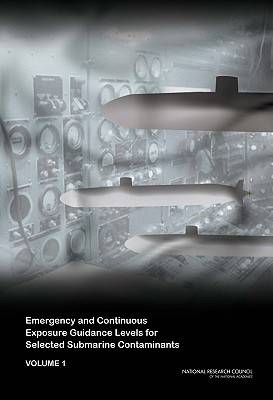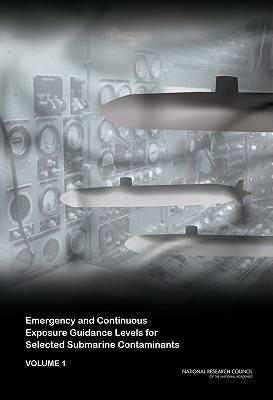
- Afhalen na 1 uur in een winkel met voorraad
- Gratis thuislevering in België vanaf € 30
- Ruim aanbod met 7 miljoen producten
- Afhalen na 1 uur in een winkel met voorraad
- Gratis thuislevering in België vanaf € 30
- Ruim aanbod met 7 miljoen producten
Zoeken
Emergency and Continuous Exposure Guidance Levels for Selected Submarine Contaminants
Volume 1
National Research Council, Division on Earth and Life Studies, Board on Environmental Studies and Toxicology, Committee on Toxicology, Subcommittee on Emergency and Continuous Exposure Guidance Level
Paperback | Engels
€ 99,45
+ 198 punten
Uitvoering
Omschrijving
U.S. Navy personnel who work on submarines are in an enclosed and isolated environment for days or weeks at a time when at sea. Unlike a typical work environment, they are potentially exposed to air contaminants 24 hours a day. To protect workers from potential adverse health effects due to those conditions, the U.S. Navy has established exposure guidance levels for a number of contaminants. The Navy asked a subcommittee of the National Research Council (NRC) to review, and develop when necessary, exposure guidance levels for 10 contaminants.
Overall, the subcommittee found the values proposed by the Navy to be suitable for protecting human health. For a few chemicals, the committee proposed levels that were lower than those proposed by the Navy. In conducting its evaluation, the subcommittee found that there is little exposure data available on the submarine environment and echoed a previous recommendation from an earlier NRC report to conduct monitoring that would provide a complete analysis of submarine air and data on exposure of personnel to contaminants.
Overall, the subcommittee found the values proposed by the Navy to be suitable for protecting human health. For a few chemicals, the committee proposed levels that were lower than those proposed by the Navy. In conducting its evaluation, the subcommittee found that there is little exposure data available on the submarine environment and echoed a previous recommendation from an earlier NRC report to conduct monitoring that would provide a complete analysis of submarine air and data on exposure of personnel to contaminants.
Specificaties
Betrokkenen
- Auteur(s):
- Uitgeverij:
Inhoud
- Aantal bladzijden:
- 316
- Taal:
- Engels
Eigenschappen
- Productcode (EAN):
- 9780309092258
- Verschijningsdatum:
- 7/04/2007
- Uitvoering:
- Paperback
- Formaat:
- Trade paperback (VS)
- Afmetingen:
- 152 mm x 229 mm

Alleen bij Standaard Boekhandel
+ 198 punten op je klantenkaart van Standaard Boekhandel
Beoordelingen
We publiceren alleen reviews die voldoen aan de voorwaarden voor reviews. Bekijk onze voorwaarden voor reviews.











